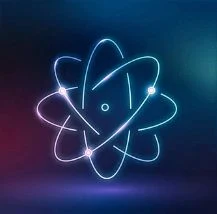Before discussing ionization energy, it's a good idea to get to know ions first.
What are Ions?
An ion is an atom or molecule whose total number of electrons is not equal to the number of protons, which causes the atom or molecule to become negatively or positively charged.
Anion, from the Greek ánō meaning top, is an ion that has more electrons than protons. This excess of electrons causes the ion to become negatively charged (because electrons are negatively charged and protons are positively charged).
In contrast, a cation, from the Greek word katá meaning bottom, is an ion that has fewer electrons than protons. This lack of electrons causes the ion to become positively charged.
Ions consisting of a single atom are called monatomic or monatomic ions. If the ion consists of two or more atoms then it is called a molecular ion or polyatomic ion.
What is Ionization?
Ionization is the physical process of converting an atom or molecule into an ion by adding or removing charged particles such as electrons.
The ionization process takes place differently depending on the product to be produced, positively charged ions or negatively charged ions.
A positively charged ion is produced when an electron bound to an atom (or molecule) absorbs enough energy to escape the electrical potential that binds it.
This energy causes electrons to break free from atomic bonds and become free electrons. The energy required for this process is called ionization energy or ionization potential.
Negatively charged ions are produced when free electrons collide with atoms. Then, these electrons are trapped in the electric potential layer of certain atoms and release excess energy due to the collision process.
In general, ionization can be divided into two types: sequential ionization and non-sequential ionization.
Ionization Energy
As already discussed, ionization energy is the energy required to remove an electron from the outermost shell of an atom. Then, it turns out that there are levels in the ionization energy.
The first ionization energy is the energy required to remove the outermost electron (electron that is most easily released) from the atom in the gaseous state to produce a gas ion with a charge of 1+.
Ionization energy is expressed in kJ/mol (kilojoules per mole). Values vary from 381 kJ/mol (which is very low) to 2370 kJ/mol (which is very high). All elements have a first ionization energy. Helium (first EI = 2370 kJ/mol) naturally cannot form positive ions because its ionization energy is very large.
The second ionization energy is the energy required to remove one more outer electron from the atom in the gaseous state after the first electron has been successfully removed to form a gas ion with a charge of 2+. The second ionization energy of an element is usually always greater than the first ionization energy.
Factors Affecting Ionization Energy Ionization
energy indicates how much energy is required to remove an electron from the attraction of the nucleus. A high ionization energy indicates the attraction of the nucleus to electrons is very strong.
So the stronger the attraction of the nucleus, the higher the ionization energy. The magnitude of the attraction of the nucleus is influenced by:
The charge of the nucleus. The more protons in the nucleus, the more positive the nuclear charge will be, so the attraction of the nucleus to electrons is getting stronger.
The distance of the electron from the nucleus. The attraction of the nucleus to the electrons is inversely proportional to the distance. Electrons closer to the nucleus are attracted more strongly than electrons in the outermost layer of the atom.

